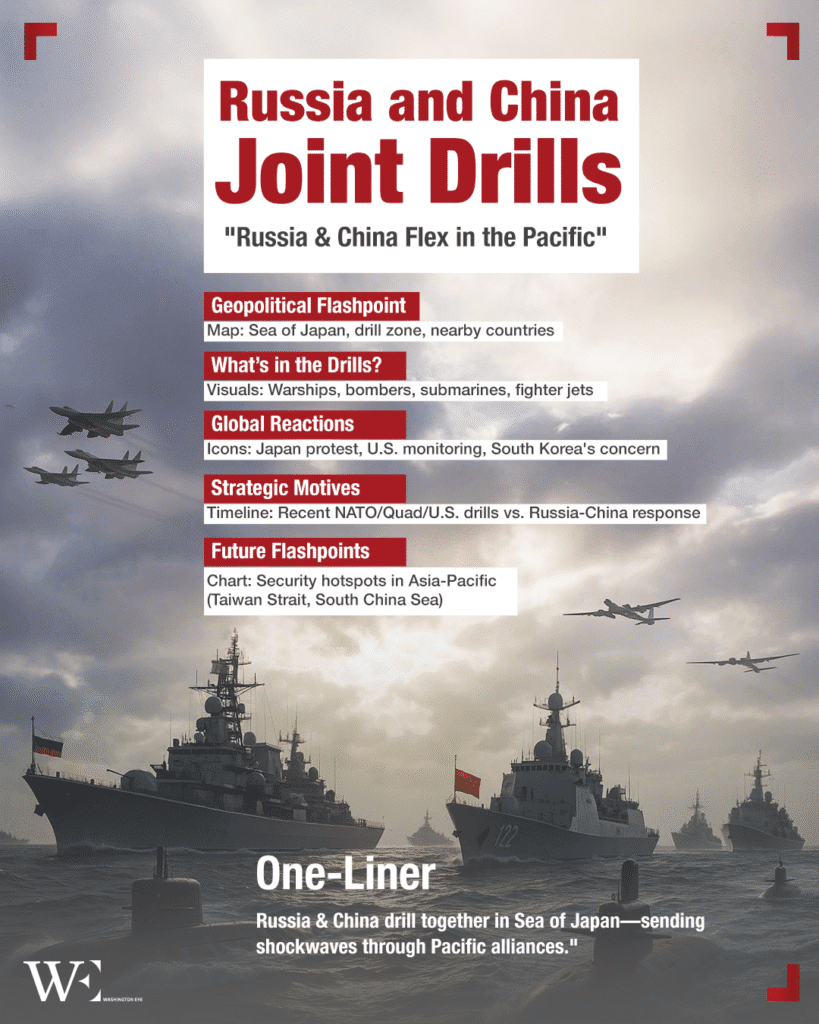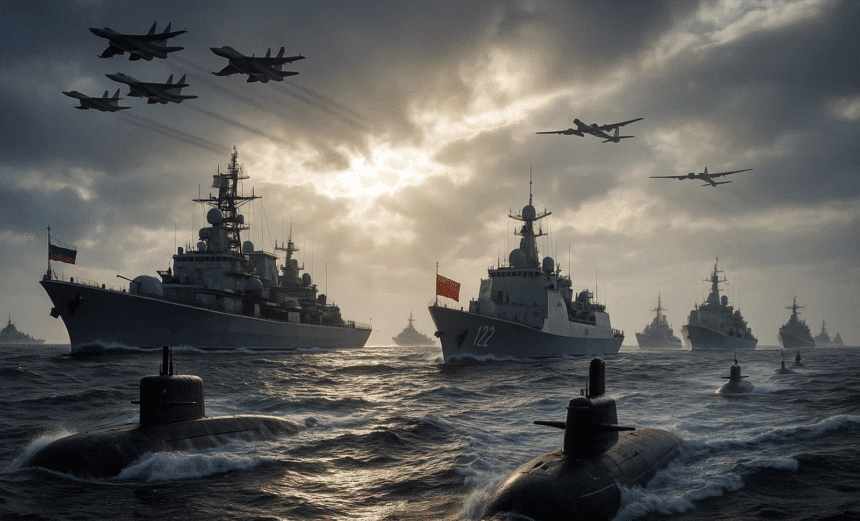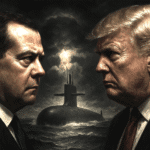In a bold display of growing military cooperation, Russia and China have launched joint naval and air drills in the Sea of Japan, raising concerns among neighboring countries and Western powers. The exercises, which began on August 4, are expected to last several days and involve more than ten warships, submarines, fighter jets, and nuclear-capable strategic bombers from both nations. The drills, according to official statements, are part of an ongoing defense cooperation program and are aimed at strengthening coordination between the two militaries. However, analysts and regional governments view the move as a direct response to escalating tensions in East Asia and increasing U.S. military presence in the Pacific.
The Sea of Japan, where the exercises are taking place, is a strategically sensitive maritime region bordered by Japan, Russia, and the Korean Peninsula. Parts of the drill zone reportedly extend near Japan’s Exclusive Economic Zone (EEZ), prompting a formal protest from Tokyo. Japan’s Foreign Ministry condemned the activity as “unacceptable” and a threat to regional peace and stability. South Korea also expressed concern over the proximity of the drills to its waters, while the United States announced it was closely monitoring the situation and reaffirmed its commitment to the defense of its allies.
Several factors appear to have motivated the timing of these joint drills. First, Russia and China have significantly deepened their defense ties in recent years, united in their opposition to Western alliances like NATO and the Quad. This exercise is seen as part of a broader strategy to demonstrate their ability to coordinate military operations in contested waters. Second, it comes amid rising U.S.-led military activity in the region, including joint exercises with Japan, South Korea, and the Philippines. By launching drills in the Sea of Japan, Russia and China are sending a clear message: they are prepared to counter what they see as growing Western encroachment.
Another layer to the move is the current geopolitical climate. Russia remains entrenched in its war in Ukraine, while China faces rising tensions over Taiwan and the South China Sea. The joint military exercise is being interpreted as a way for both nations to show strategic unity and deter any moves they perceive as hostile. The inclusion of long-range bombers and live-fire missile exercises underscores the seriousness of the drills and their potential as a deterrent mechanism.
Reactions from the region have been swift. Japan and South Korea have raised diplomatic objections, with Tokyo particularly alarmed by the proximity to its EEZ. Japan’s defense ministry has increased surveillance and deployed maritime patrol aircraft to monitor the activities. Meanwhile, the United States has emphasized its readiness to defend allies and warned against any actions that could destabilize the region further.
The drills are also viewed in the context of a broader shift in global security dynamics. While Russia and China have conducted joint exercises before, including the Vostok and Joint Sea series, this particular operation is notable for its timing, scale, and location. Experts warn it could accelerate a new arms race in the Asia-Pacific and solidify an emerging military axis between Beijing and Moscow. Dr. Elaine Park, a regional security expert, noted, “This isn’t just about training, it’s a calculated move to test boundaries and reshape power balances.”
With regional instability already heightened by North Korean missile tests, tensions in the Taiwan Strait, and maritime disputes in the South China Sea, the Russia-China drills add another layer of complexity. Diplomatic channels may soon become more active as the international community, including ASEAN and the UN Security Council, looks for ways to reduce tensions and avoid further escalation.














